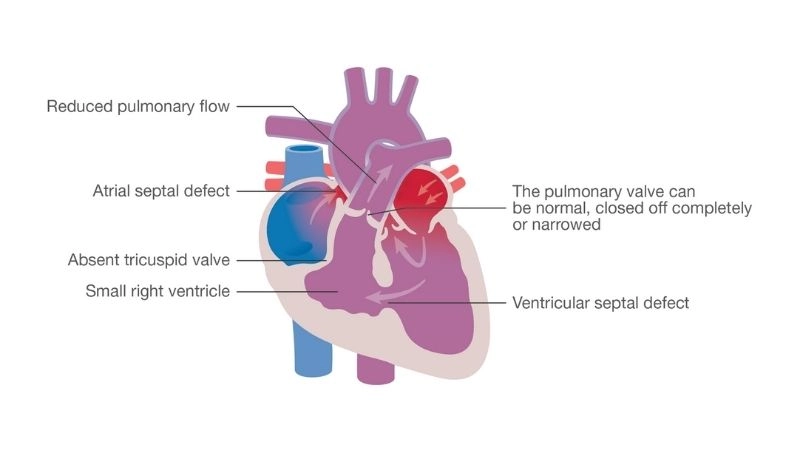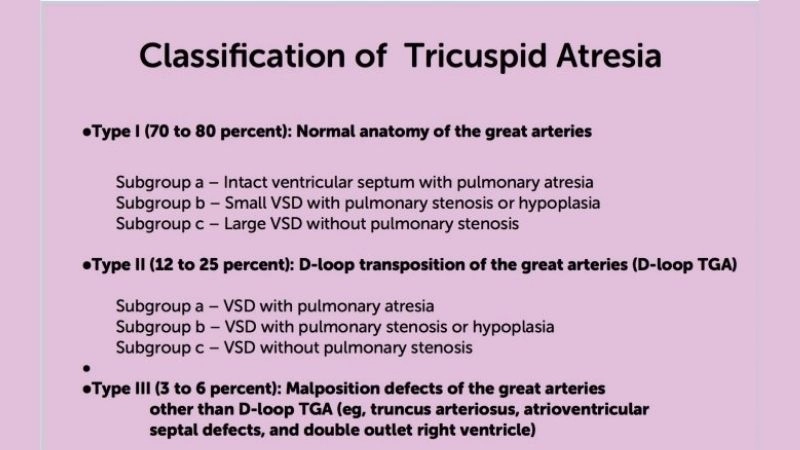Tricuspid Atresia is a rare congenital heart defect. Learn its causes, symptoms, treatment options, and how to manage daily life with this condition.
What are the main causes of tricuspid atresia?
- Tricuspid atresia is caused by abnormal development of the tricuspid valve during fetal growth, preventing blood flow between the right atrium and right ventricle.
- Genetic factors and chromosomal abnormalities may increase the risk of tricuspid atresia, often linked with other congenital heart defects and syndromes.
- Maternal conditions like diabetes, rubella infection, or drug and alcohol use during pregnancy may contribute to the development of this condition.

Tricuspid atresia symptoms and warning signs explained
>>> Understand more about: Hypoplastic Left Heart Syndrome (HLHS) symptoms to know
Key symptoms of tricuspid atresia to watch for
- Cyanosis, or a bluish discoloration of the skin, lips, and nails, is a common symptom due to low oxygen levels in the blood.
- Infants may show difficulty breathing, rapid breathing, or fatigue during feeding, indicating reduced oxygen supply to body tissues.
- Poor growth, weight gain problems, and frequent respiratory infections are common signs of tricuspid atresia in early childhood.
How can you prevent tricuspid atresia effectively?
- Prevention includes proper prenatal care, avoiding harmful substances, and controlling chronic conditions like diabetes to reduce fetal heart defect risks.
- Genetic counseling and prenatal screening help identify families at higher risk, improving early diagnosis and management options.
- Vaccinations and infection prevention during pregnancy lower the risk of congenital heart defects, including tricuspid atresia.

Tricuspid atresia treatment medical and surgical options
>>> Understand more about: Hypoplastic Right Heart Syndrome (HRHS) management
Images visual examples of tricuspid atresia
Visual examples help families and healthcare providers understand its impact on the heart’s structure and the importance of early intervention.







>>> Understand more about: Pulmonary Atresia medical advances in care and treatment
Understanding Tricuspid Atresia helps patients and families manage health better, reduce risks, and improve quality of life through proper treatment and care.





